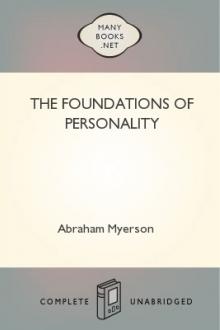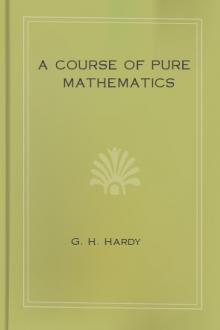Genre Science. Page - 6

patterns may be further divided into sub-groups by means of the smaller differences existing between the patterns in the same general group. These divisions are as follows:
I. ARCH
a. Plain arch. b. Tented arch.
II. LOOP
a. Radial loop. b. Ulnar loop.
III. WHORL
a. Plain whorl. b. Central pocket loop. c. Double loop. d. Accidental whorl.
Illustrations 1 to 10 are examples of the various types of fingerprint patterns.
[Illustration: 1. Plain arch.]
[Illustration: 2. Tented arch.]
[Illustration: 3. Tented arch.]
[Illustration: 4. Loop.]
[Illustration: 5. Loop.]
[Illustration: 6. Central pocket loop.]
[Illustration: 7. Plain whorl.]
[Illustration: 8. Double loop.]
[Illustration: 9. Double loop.]
[Illustration: 10. Accidental.]
Interpretation
Before pattern definition can be understood, it is necessary

ase of many animals itseems as though the necessity of a fluid environment for living matterdid not apply, for the superficial cells of the skin have no fluidaround them; these cells, however, are dead, and serve merely amechanical or protective purpose. All the living cells of the skin andall the cells beneath this have fluid around them.
Living matter occurs always in the form of small masses called"cells," which are the living units. The cells vary in form, structureand size, some being so large that they can be seen with the nakedeye, while others are so small that they cannot be distinctly seenwith the highest power of the microscope. The living thing or organismmay be composed of a single cell or, in the case of the higher animalsand plants, may be formed of great numbers of cells, those of asimilar character being combined in masses to form organs such as theliver and brain.
In each cell there is a differentiated area constituting a specialstructure, the nucleus, which contains a pe

w of progressive development, and as all the forms of life thus tend to progress, in order to account for the existence at the present day of simple productions, he maintains that such forms are now spontaneously generated. (I have taken the date of the first publication of Lamarck from Isidore Geoffroy Saint- Hilaire's ("Hist. Nat. Generale", tom. ii. page 405, 1859) excellent history of opinion on this subject. In this work a full account is given of Buffon's conclusions on the same subject. It is curious how largely my grandfather, Dr. Erasmus Darwin, anticipated the views and erroneous grounds of opinion of Lamarck in his "Zoonomia" (vol. i. pages 500-510), published in 1794. According to Isid. Geoffroy there is no doubt that Goethe was an extreme partisan of similar views, as shown in the introduction to a work written in 1794 and 1795, but not published till long afterward; he has pointedly remarked ("Goethe als Naturforscher", von Dr. Karl Meding, s. 34) that the future question for naturalists will be

he same goal.
As to physical things, chemic, mineralogic, astronomic, it is not customary to say that they act to achieve Truth or Entity, but it is understood that all motions are toward Equilibrium: that there is no motion except toward Equilibrium, of course always away from some other approximation to Equilibrium.
All biologic phenomena act to adjust: there are no biologic actions other than adjustments.
Adjustment is another name for Equilibrium. Equilibrium is the Universal, or that which has nothing external to derange it.
But that all that we call "being" is motion: and that all motion is the expression, not of equilibrium, but of equilibrating, or of equilibrium unattained: that life-motions are expressions of equilibrium unattained: that all thought relates to the unattained: that to have what is called being in our quasi-state, is not to be in the positive sense, or is to be intermediate to Equilibrium and Inequilibrium.
So then:
That all phenomena in our i

is so much harder, to be candid about ourselves. Let us look at ourselves as if we were so many bees and ants, not forgetting, of course, to make use of the inside information that in the case of the insects we so conspicuously lack.
This does not mean that human history, once constructed according to truth-regarding principles, should and could not be used for the practical advantage of mankind. The anthropologist, however, is not, as such, concerned with the practical employment to which his discoveries are put. At most, he may, on the strength of a conviction that truth is mighty and will prevail for human good, invite practical men to study his facts and generalizations in the hope that, by knowing mankind better, they may come to appreciate and serve it better. For instance, the administrator, who rules over savages, is almost invariably quite well-meaning, but not seldom utterly ignorant of native customs and beliefs. So, in many cases, is the missionary, another type of person in authority, who

Gratiolet appears to overlook inherited habit, and even to some extent habit in the individual; and therefore he fails, as it seems to me, to give the right explanation, or any explanation at all, of many gestures and expressions. As an illustration of what he calls symbolic movements, I will quote his remarks (p. 37), taken from M. Chevreul, on a man playing at billiards. "Si une bille devie legerement de la direction que le joueur pretend zlui imprimer, ne l'avez-vous pas vu cent fois la pousser du regard, de la tete et meme des epaules, comme si ces mouvements, purement symboliques, pouvaient rectifier son trajet? Des mouvements non moins significatifs se produisent quand la bille manque d'une impulsion suffisante. Et cliez les joueurs novices, ils sont quelquefois accuses au point d'eveiller le sourire sur les levres des spectateurs." Such movements, as it appeirs to me, may be attributed simply to habit. As often as a man has wished to move an object to one side, he has always pushed it to that side when forwards, he has pushed it forwards; and if he has wished to arrest it, he has pulled backwards. Therefore, when a man sees his ball travelling in a wrong direction, and he intensely wishes it to go in another direction, he cannot avoid, from long habit, unconsciously performing movements which in other cases he has found effectual.
As an instance of sympathetic movements Gratiolet gives (p. 212) the following case:--"un jeune chien A oreilles droites, auquel son maitre presente de loin quelque viande appetissante, fixe avec ardeur ses yeux sur cet objet dont il suit tous les mouvements, et pendant que les yeux regardent, les deux oreilles se portent en avant comme si cet objet pouvait etre entendu."

boiling water, and after cooling for a few minutes, it is placed in a vessel containing finely chopped ice (Fig. 10). The mercury column falls rapidly, but finally remains stationary, and at this level another scratch is made on the tube and the point is marked 32°. The space between these two points, which represent the temperatures of boiling water and of melting ice, is divided into 180 equal parts called degrees. The thermometer in use in the United States is marked in this way and is called the Fahrenheit thermometer after its designer. Before the degrees are etched on the thermometer the open end of the tube is sealed.
[Illustration: FIG. 9.--Determining one of the fixed points of a thermometer.]
The Centigrade thermometer, in use in foreign countries and in all scientific work, is similar to the Fahrenheit except that the fixed points are marked 100° and 0°, and the interval between the points is divided into 100 equal parts instead of into 180.
The boiling point of

thebrain. In fact, it does not, for the long-headed are notlong-brained, nor are the short-headed short-brained. Second, thesize and disposal of the sinuses, the state of nutrition inchildhood have far more to do with the "bumps" of the head thanbrain or character. The bump of philoprogenitiveness has in myexperience more often been the result of rickets than a sign ofparental love.
[1] It is to be remembered that phrenology had a good standing atone time, though it has since lapsed into quackdom. This is thehistory of many a "short cut" into knowledge. Thus the wisest menof past centuries believed in astrology. Paracelsus, who gave tothe world the use of Hg in therapeutics, relied in large part forhis diagnosis and cures upon alchemy and astrology.
Without meaning to pun, we may dismiss the claims of palmistryoffhand. Normally the lines of the hand do not change from birthto death, but character does change. The hand, its shape and itstexture are markedly influenced by illness,[1] toil

gement to the veryvaluable Journals of Poggendorff and Schweigger. Lessexclusively national than their Gallic compeer, they present apicture of the actual progress of physical science throughoutEurope. Indeed, we have been often astonished to see with whatcelerity every thing, even moderately valuable in the scientificpublications of this country, finds its way into their pages.This ought to encourage our men of science. They have a largeraudience, and a wider sympathy than they are perhaps aware of;and however disheartening the general diffusion of smatterings ofa number of subjects, and the almost equally general indifferenceto profound knowledge in any, among their own countrymen, may be,they may rest assured that not a fact they may discover, nor agood experiment they may make, but is instantly repeated,verified, and commented upon, in Germany, and, we may add too, inItaly. We wish the obligation were mutual. Here, whole branchesof continental discovery are unstudied, and indeed almos
